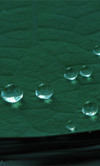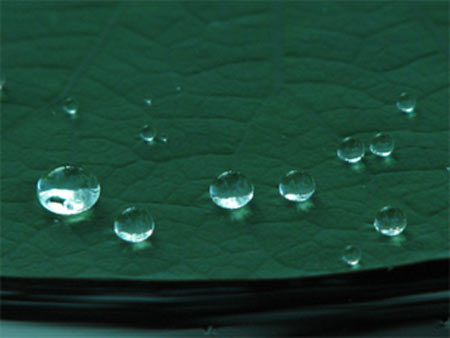Oil-shedding coating applications
 In a previous article on oil-shedding coatings in summer 2010, I mentioned some of the reasons why they might yield performance gains in an engine where frictional losses due to the action of oil shearing are significant. These coatings are likely to offer most gain in engines where there is a combination of an excess of oil and a number of areas of small dynamic clearance where shearing takes place.
In a previous article on oil-shedding coatings in summer 2010, I mentioned some of the reasons why they might yield performance gains in an engine where frictional losses due to the action of oil shearing are significant. These coatings are likely to offer most gain in engines where there is a combination of an excess of oil and a number of areas of small dynamic clearance where shearing takes place.
The reality is that, where opportunity exists to engineer a more carefully considered solution to the problem of oil shear, we should see greater gains. Reduction of the quantity of oil, by tackling the quantity of supply and/or improvements to scavenging, combined with an increase in clearances (if possible) will also bring useful results, but clearly with much greater expenditure of time and money.
Some companies sell oil-shedding coatings based on the fact that components will be heavier when coated in oil, and are therefore likely to 'slow the engine down'. How much oil is likely to adhere to a given component under conditions of high acceleration is not clear, but the main gains from such a coating are unlikely to be due to this reason. There are amateur demonstrations of the amount of oil adhering to an engine component, but at working temperature, the oil viscosity is much lower than at room temperature, and the masses of oil added to the reciprocating and rotating components will be lower than these garage experiments demonstrate.
However, this is not to deny the fact that oil-shedding coatings may offer advantages quite separately from decreasing oil-shear losses. There is quite possibly a reasonable amount of oil hanging around in any engine on static components that are not subject to significant oil shear, and this amount can be significant. More efficient drainage of oil back to the sump/lower crankcase might allow the amount of oil on the car or bike to be reduced.
In designing a new engine, or modifying an existing production engine for racing, much consideration is given to providing easy egress to oil from the top end of the engine, where large quantities are apt to become 'lost'. Cam covers, cam carriers and cylinder heads can all have significant wetted areas where oil is likely to adhere, and where there is nothing physical to sweep the oil away, other than more oil. Here, oil-shedding coatings work by changing the 'surface energy' of the metal surfaces, such that oil will not spread into a thin film but will collect into droplets which then run away under the action of gravity.

The 'non-wetting' action we are aiming for here is similar to that we see on a freshly waxed car after rain, with liquid forming broadly spherical droplets. Making a smooth surface is not necessarily the way to go though; a dusty car can also show non-wetting tendencies.
The best examples in nature of non-wetting surfaces are petals and lotus leaves. Both are microscopically very rough, but in different ways. While water will 'wet' neither surface, lotus leaves will shed a water drop of almost any size. Water forming small droplets on a rose will not run off even if the flower is tipped upside down.
In an oil-shedding coating, we are looking not only for the surface not to 'wet' but also that the surface can shed the oil. With liquids showing lower surface tensions at high temperature, as might be found in an engine, the job of preventing wetting and shedding becomes more difficult. Work continues in trying to create better oil-shedding coatings and surfaces (called super-oleophobic surfaces) on many fronts, of which motorsport is only one. Creating lotus-like liquid-shedding behaviour for both water and oil has benefits for many applications outside of motor racing.
Fig. 1 - We can learn much about wetting of surfaces and shedding of liquids from studying nature. This is a lotus leaf.
Written by Wayne Ward